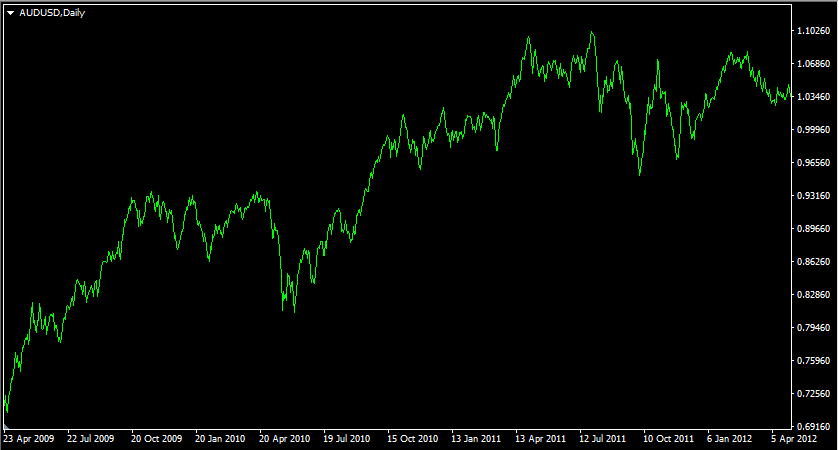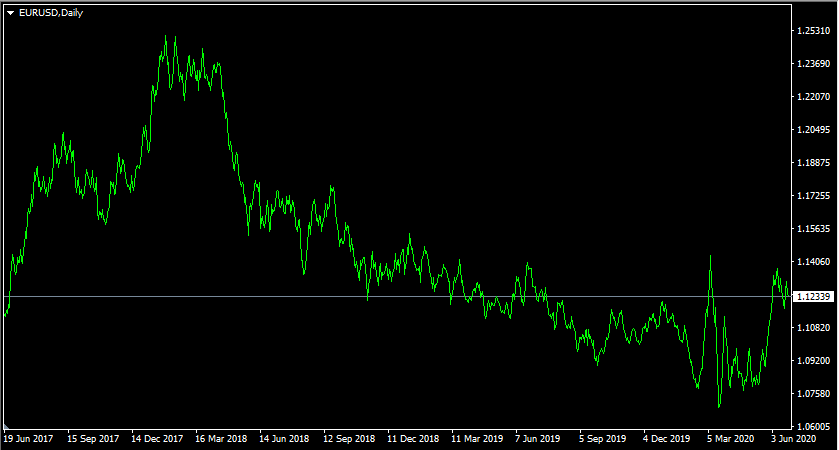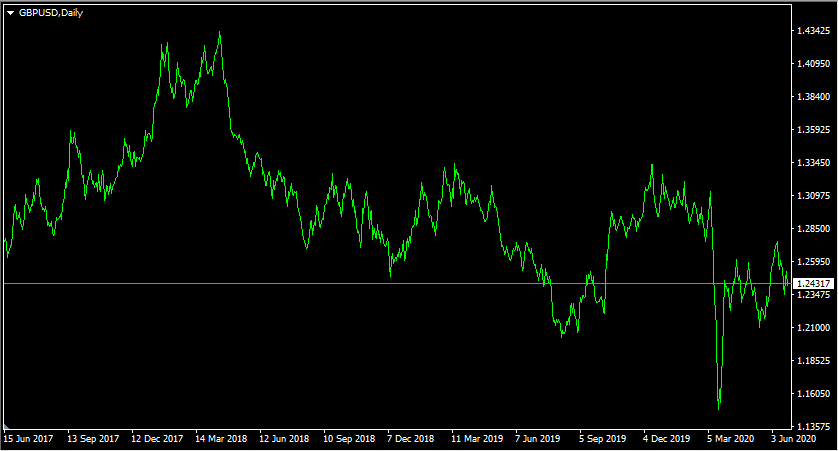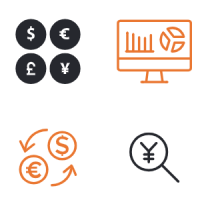Table of content
Some market participants, especially beginners are always looking for a no-loss strategy in Forex. After all, if it is achievable, then it is much better to avoid any losses altogether, rather than focusing on increasing the percentage of winning trades.
However, even those traders with limited experience can recognize that there is no zero-loss Forex trading strategy, which can guarantee a 100% success rate. The main reason for this is the fact that the exchange rates in the market are influenced by dozens of factors, therefore, there is no Forex no loss strategy which can take account of all of those forces.
Despite this state of affairs, there are some very low-risk methods, which can help traders to achieve a minimal loss of Forex trading. Obviously, even those strategies can not guarantee that a market participant will always end up with profits. Yet, those methods can certainly help reduce their risk exposure and the volume of potential losses as well.
In this article, we will discuss two such methods, which can be helpful for those traders who are always looking for the best Forex no-loss strategy and can not find it for obvious reasons. The list of those includes carry trading, as well as Forex hedging strategies.
Just like with any other trading methods, each of those tactics, mentioned above does have their advantages and drawbacks. However, despite those differences, all of them have the potential to help traders to mitigate the risk associated with Forex trading. Finally, we will discuss why even those strategies do have their imperfections and why they can guarantee a no loss Forex trading.
Benefits and Risks of Carry Trading
As we all know, very often financial experts and experienced professional traders are always talking about how to improve on the percentages of winning trades and minimize losses. The main idea behind this approach is that if traders manage to close more than 50% of their positions with some winnings then those earnings could potentially offset all of their losses and even hopefully leave them with some net profit in the process.
It goes without saying that for many beginners in Forex trade, this does not seem much appealing. Going through the drama of losing dozens of trades, even with some decent winning percentages can be too emotionally burdensome for some people. Also, there is no guarantee that the trader will always end up with net profits. In fact, it is a well-known fact that the majority of the traders lose money because of a lack of risk management, high leverage, absence of good strategy, and many other reasons.

One of the reasons why some traders lose money on a regular basis is the fact that they execute large numbers of trades without any coherent strategy. On the other hand, conducting a thorough technical and fundamental analysis of dozens of currency pairs can be an arduous task.
It goes without saying that there are many professional Forex traders who do this on a daily basis. However, for a significant portion of market participants, this is an exhausting process. After all, even if a trader conducts some detailed analysis, there is no guarantee that he or she can always guess correctly the future path of the exchange rates.
Therefore, faced with this reality, some traders conclude that carry trading might be one of the best Forex no-loss strategies. This essentially involves borrowing in the lower-yielding currency in order to buy a higher-yielding currency. As a result of this transaction, the trader benefits from interest rate differentials between those two currencies and receives income from the broker on a daily basis. This payment is also known as rollover or interest swap. The latter term is quite self-explanatory since in this process a trader is swapping interest payments of one currency to another.
For some practical example, let us take a look at this daily AUD/USD chart:

Because of its high yields, the Australian dollar has been one of the most favored currencies among traders for carry trades. In response to the beginning of the great recession, the US Federal Reserve cut its Federal Funds rate repeatedly, eventually reducing them to 0% to 0.25% range and keeping it at that level for the next 7 years.
In contrast to those policies, the Reserve Bank of Australia only reduced its own cash rate to 3%. Once this recession was over, the Australian policymakers have steadily raised their interest rates, which by November 2010, have already reached 4.75%. Due to a weakening economy, the RBA did consent to two rate cuts by the end of 2011, bringing its cash rate to 4.25%.
So as we can see despite those later developments, for most of the period, shown in this chart, the interest rate differential between the US dollar and the Australian dollar was 4%.
To simplify our analysis, let us assume that a trader held a long AUD/USD position for three years, from April 2009 until April 2012, with the average interest rate difference of 4%, which is quite close to the actual data. During this period the Australian dollar has risen from $0.71 to $1.03. This means that the AUD has gained 45% against the USD, during this period. However, traders, actual profit will be higher than this amount.
The total income from those rollover payments would amount to at least 12% of the invested amount. This means that even if the currency pair fell by 11%, a trader would still end up with some profits.
Now, in this case, a 4% annual interest rate might be a decent rate of return for Certificates of Deposit or savings accounts, however, for carry trading, it might be a bit low rate. After all, unlike with bank deposits, with Forex trading, the invested capital is not secured and is very much subject to daily market fluctuations. So it is important for many traders to have a proper risk-reward ratio.
However, here it is worth keeping in mind that in the Forex market there is a possibility of leverage trades. It goes without saying that it makes no sense to borrow money just put those funds to the savings account. An individual will only lose money without any significant gains. On the other hand, with the moderate use of leverage, traders can achieve substantial returns on carrying traders.
Returning to our earlier example, if traders use 1:5 leverage with one standard lot, they would earn a 20% annual return, instead of 4%. In this scenario, market participants will need to make a $20,000 investment in order to open a $100,000 position. If they have opened a long AUD/USD position and kept for the entire period, shown on this chart, In terms of volume, they would receive $20,000 in interest payments during the year. This means that they have achieved a 100% return on their original investment, which is quite impressive.
Risks of Carry Trading
Now despite all of its obvious advantages and potential for profits, carry trading does have its risks and drawbacks. Firstly, as mentioned before, this method represents a fail-proof no loss Forex strategy. Just like with any other type of trading, the principal of invested capital is not secure, but changes according to the currency exchange rate movements. So there is always a risk that the market can go against the trader and wipe out all of the gains, made from carry trading.
Returning to our earlier example, here carry traders benefited from a considerable capital appreciation. If during this period the US dollar strengthened considerably against the Australian dollar, they could have suffered potential losses. Putting it simply, If the AUD/USD has risen by any amount, stayed flat or fell by less than 12%, the trader would end up with a profit. However, if AUD/USD dropped by more than 12% than a market participant would have ended up on the losing side of the trade.
Therefore, carry trading is a low-risk method since it puts odds in trader’s favor, but it can not be considered as a no loss Forex trading strategy since traders using this method can still lose money in some cases.
Forex Hedging Strategies
When it comes to hedging strategies in trading, there is a great variety of methods, which professional traders use on a daily basis. Discussing the benefits and disadvantages of each of those does require an entire article on itself. Therefore, to simplify the matter and make it more digestible, here we will focus on just one of these strategies.
It is a well-known fact that some currency pairs are highly correlated with each other. This means that they tend to move in the same direction. There are also those currency pairs that tend to move in opposite directions on a regular basis. They are called negatively correlated currencies.
The Forex correlation hedging strategy aims to make use of this tendency in order to hedge against the currency exchange rate risks. By contracting a portfolio of trades, which includes negatively correlated pairs, traders can guard against the possible losses due to unpredictable exchange rates.
In order to understand this method better, let us take a look at the relationship between the EUR/USD and GBP/USD. Those are highly correlated currency pairs, which mostly tend to move in the same direction. There are some exceptions to this, sometimes their paths might diverge due to monetary policy differences and due to some important news releases. However, so far the long term relationship between those two pairs so far remained intact.
Here we can take a look at the daily EUR/USD chart, covering the last 3 years of price action:

The second daily GBP/USD charts, shows the development of the exchange rate of this pair during the same period:

As we can see from those two charts above, both of those pairs have gone through two long term trends. The first phase covers the period from January 2017 until April 2018. During this period, the EUR/USD has risen from $1.11 to $1.25, gaining 12.6% in the process. At the same time, the GBP/USD pair has also made some notable gains, rising from $1.27 to $1.43. Interestingly, the growth here in percentage terms was very close to that of EUR/USD and reached 12.6%.
The second long term trend in those charts began from late April 2018 and one can argue that it still continues today, by June 2020. The overall decline in the exchange rates was gradual but steady. During this period the EUR/USD pair fell from $1.25 to $1.12, losing more than 10% in the process. At the same time, the GBP/USD exchange rate fell from $1.43 to $1.24, which represents a 15% decline in percentage terms.
So as we can see from the above example, when two currency pairs are highly correlated to each other, the exact percentages of rise and fall might be different, but typically they tend to follow the same trends.
Therefore, one way to benefit from this knowledge is to use a hedging method as a zero net loss trading strategy. One way to do this would be to take the opposite sides of trade with highly correlated currencies. In our example, this can be achieved by opening a long EUR/USD position and a short GBP/USD position.
In this way, the potential losses with one trade will most likely be compensated by the profits coming from the second winning position. Obviously, traders could also open a short EUR/USD trade and a long GBP/USD position, if he or she so decides. Both of those cases would represent a Forex hedging strategy.
So how can a trader earn some net profits from such trades? Will not those two positions just cancel each other out at the end? Well, traders always have an option, that once the overall direction of the trend becomes obvious, they can simply close the losing trade and cut their losses. At the same time, they can maintain the winning position, until the trend runs its course and then lock in those gains. Therefore, for example, if a trader loses 5% with EUR/USD and gains 8% on GBP/USD, then he or she will still earn a net profit of 3%.
Obviously, this strategy does not have to be strictly limited to just two currency pairs. Traders can employ the same tactics with 4,6 or even 10 pairs. However, it is worth mentioning that for some traders, managing large numbers of positions simultaneously can be quite burdensome and stressful. Therefore, some market participants might consider either limiting the actual number of those trades or alternatively, put stop-loss and take profit orders with each position. In this way, traders do not have to monitor the exchange rate at all times.
Imperfections of Forex Correlations Hedging Strategies
As we can see from the arguments above, in many cases, traders can benefit from hedging strategies and earn some decent returns in the process, reducing the risk exposure at the same time. Now for some traders, this might seem a perfect Forex no-loss strategy. However, if we take a look close at some of the risks associated with this method, we will see that this is not the case.
Firstly, it is worth noting that the old principle that past performance is not a guarantee for future performance, is still in force when it comes to Forex trading. Even some of the most highly correlated currencies at some point, tend to diverge from each other. There can be several reasons for this development.

This can happen due to different monetary policies if one central bank decides to hike rates, while the other is considering the rate cut, then the market typically favors higher-yielding currencies. Also, this can happen due to geopolitical events. For example, after the EU referendum in the United Kingdom, the high degree of correlation between the EUR/USD and GBP/USD was disrupted and the pound collapsed and suffered some serious losses. Divergence can also happen due to economic growth rate or inflation differentials and many other reasons.
However, this is not the only reason why the correlation hedging method does not represent a no-loss Forex trading strategy. With this type of approach, there is always a risk that traders might lose more money on losing trade, compared to potential profits with winning trade, ending up with a net loss. It is true that most likely the size of those potential losses might be smaller, compared to normal trading. However, it is worth mentioning that the main point of trading Forex is to earn some payouts, rather than just lose less money than an average trader does.
In order to address those concerns, some traders turn to no loss option trading strategy. This essentially involves the same tactics as described above, with a notable addition that market participants purchase options to guard against unpredictable exchange rate movements.
Now, this method under the right circumstances can indeed help traders to reduce their risk exposure. However, this is not a Forex trading strategy with no loss either. Here it is important to mention that options are not free instruments, traders have to pay fees to purchase those. Therefore if a trader tries to buy as many options to cover all possible scenarios, then it is likely that the potential profits can be lower than all those fees for buying those instruments.
Therefore, it is worth mentioning that traders looking for Forex no loss trading strategy can not really find a method that can always guarantee the safety of the principal of their investment at all times. There are other investment instruments, like Certificates of Deposit (CDs) and Bonds, where the principal is secure, however, they also have relatively lower returns, compared to Forex. Therefore, those individuals who are very concerned about the safety of the principal of their hard-earned money can be some decent options for investing.
In the case of trading Foreign currencies, there are methods that can reduce those risks and help traders to potentially improve the ratio of winning trades. Therefore, in the long term employing those strategies can help some traders to potentially improve their earnings and reduce their losses. However, even with those methods, there will be times, when traders might face some losing trades.
Minimizing Losses in Forex Trading – Key Takeaways
- Any trader with some experience in trading knows that there is no Forex zero loss strategy. There are indeed methods, which help traders to significantly reduce their risk exposure and also achieve a higher percentage of winning trades. However, none of them can be considered as a Forex strategy with no loss. Each of those methods has its benefits and advantages. However, even with those strategies traders can still lose money in some cases and be disappointed by the results.
- Carry trading strategy focuses on borrowing a low-yielding currency against the higher-yielding currency. Trader than capitalizes on those interest rate differentials, by receiving daily rollover payments from the brokerage company. Therefore this approach can significantly improve the odds in traders’ favor. However, despite all of its advantages, it is worth mentioning that the invested capital is still at risk and its value fluctuates constantly in line with the exchange rate movements.
- Forex correlation hedging strategy involves taking the opposite positions on two or more highly positively correlated currency pairs. The main idea behind this approach is that losses with one pair will be compensated by the winnings from the other trade. This seems quite logical and can certainly help traders reduce their risk exposure. Yet, it is essential to note that sometimes even highly correlated currency pairs do diverge as a result of changing interest rates, economic indicators, and many other factors. Therefore this method can not guarantee a 100% success rate either.



